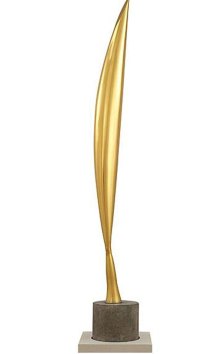 Many people reject abstract art as art because the subject is difficult to discern or totally non-existent. Interestingly enough, there is a legal precedent from 1927 that states that abstract art is art. In Art on Trial: From Whistler to Rothko, Laurie Adams describes the trial, Bancusi v. United States. An American photographer, Edward Steichen, bought Brancusi's Bird in Space. When the sculpture entered the United States, a customs agent charged duty for the sculpture. To add insult to injury, the sculpture was placed "under the classification of Kitchen Utensils and Hospital Supplies." Original works of art are duty-free. According to the customs agent Brancusi wasn't an artist and therefore whatever he created wasn't art. Incensed, Steichen appealed the decision. Expert witnesses testified as to whether Bird in Space was art. "Both sides in the case evidently agreed that the Bird in Space was an original, nonutilitarian work by a professional sculptor. The weight of the judgment finally focused on a much more important issue; whether the government could dictate taste." The judge concluded that abstract art was art. The judge's decision indicates that the government and customs agents are not the arbiters of taste for the United States.
Many people reject abstract art as art because the subject is difficult to discern or totally non-existent. Interestingly enough, there is a legal precedent from 1927 that states that abstract art is art. In Art on Trial: From Whistler to Rothko, Laurie Adams describes the trial, Bancusi v. United States. An American photographer, Edward Steichen, bought Brancusi's Bird in Space. When the sculpture entered the United States, a customs agent charged duty for the sculpture. To add insult to injury, the sculpture was placed "under the classification of Kitchen Utensils and Hospital Supplies." Original works of art are duty-free. According to the customs agent Brancusi wasn't an artist and therefore whatever he created wasn't art. Incensed, Steichen appealed the decision. Expert witnesses testified as to whether Bird in Space was art. "Both sides in the case evidently agreed that the Bird in Space was an original, nonutilitarian work by a professional sculptor. The weight of the judgment finally focused on a much more important issue; whether the government could dictate taste." The judge concluded that abstract art was art. The judge's decision indicates that the government and customs agents are not the arbiters of taste for the United States.Adams, Laurie. Art on Trial: From Whistler to Rothko. New York: Walker, 1976. Print.
No comments:
Post a Comment